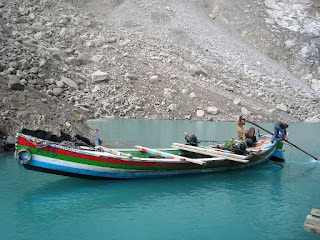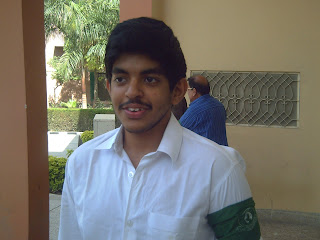The Islamic Republic of Pakistan was craved on the map of the world on 14th August 1947. With its emergence many challenging issues confronted it, a newly built state with no institutions, industry, infrastructure and millions of homeless immigrant people were in a dire need of a consistent mission of setting a direction.. The mission always emanates from visionary and strong leadership, and the lack of leadership, in my opinion has been the malaise of Pakistan.
Before moving any further, we ought to be clear in our minds about leadership. How shall we define a leader? Does the possession of wealth, power and strong family background make a good leader? In answering these questions we will be able to analyze between the leaders we perceive on our part versus the real actors.
If leaders are to be associated one with family backgrounds, wealth and lands, then no other but our feudal lords and industrialists make the best of it. However, in an informed, knowledgeable and globalised society the feudal tend to be more absolute and ‘monarchic’, while industrialists constitute of the business community concerned with their own profitability based on the left out working majority. Hence, giving rise to class society and capitalism. Leadership based and determined on power transforms into dictatorship and brings the army to fit in. Thus, in all the scenarios, the majority or the masses get subjugated. Therefore, leadership is determined by an individual’s ability to contemplate, foresee (vision), motivate (through personal charisma) and principles. Hence, education to have a cognitive ability to deal with present and future makes a good leader. And, be it from the House of Lords or commons he or she is selfless and faces the world courageously for their constituency.
Having defined a leader, lets ask our self; has our country ever been led by any leader? The answer is very obvious in the process of mobilization of Muslims at the time of independence and in the creation of the country. With Quaid-e-Azam Muahmmad Ali Jinnah in the forefront and the role of the dedicated and sincere team in the oblivion of his figurehead, they provided us with a legendary example of leadership. Without manpower on challenging posts, he shaped a strategic roadmap for the newly born country. For example, ‘his foreign policy revolved around, firstly, on his worldview of being rationalistic about religion of the state and equality, justice and fairness in the international affairs. Secondly, Pakistan’s security compulsion constituted his foreign policy, where besides having reservations on the boundary (Redcliff Award) he aimed for peace in the region and he also had to tackle the hostile forces around. Finally his mission was to deal with the international affairs by positioning Pakistan wisely in it.’
But, as fate offered, the first and true leader of the country did not survive long; with some critiques saying that few prominent figures for power game were involved in letting him die the way he died. Following Quaid the first Prime Minister Mr. Liquate Ali Khan was assassinated in 1951, less than five years after we got independence.
In the later years of 1969 and 1970s, another progressive leader cracked the camouflage of evil power. He gave the people an idea of ‘democracy, social justice and Islam’ to be revived. And, he was Zulfiqar Ali Bhutto. This era experienced the mobilization of students and educated people, which otherwise had been jammed by the evil face of rule after Liaqat Ali Khan’s assassination (discussed later). In the elections of 1970 Zulfiqar Ali Bhutto of West Pakistan and Mujeeb ur Rehman of East Pakistan (current Bangladesh) gained majority. But issue of governance prevailed which could have been solved by negotiation, but the then Godzilla power Yaha Khan didn’t let democracy and leadership to take roots. He indulged military intervention causing to the fall of Dhaka in 1971.
Now if we claim that we have had very few leaders in the country, then where and how do the self proclaimed ‘leaders’ fit in? These despots intervened every time the general mass had the chances of rising to the power. They strangled all the nascent democracies. Let’s now examine their contribution towards our nation’s destiny.
Besides many administrative and political set backs, nepotism and despotism was the birth their governance gave to, and kept nurturing it on the cost of our national interest. Like the model of monarchy and imperialist system, group of nobility were chosen to serve in the interest of the dictators. The 1958 crown ascendance of General Ayub Khan and his 10 years legacy is colored with the banishment of progressive writers, poets and civil society. While the next General Yahya continued with General Ayub’s set of agendas, General Zia ul Haq in the 1970s came up with his idea of control. He will be remembered for hanging Zulfiqar Ali Bhutto and producing militancy. His main feature was cohesion with religious clerics and the use of religious institutions for making the country hub of sectarian clash, the way it is today. Finally comes General Pervaiz Musharaf in 1998, and his is the responsibility of de-militancy, making our country the ‘leading’ counter terrorist nation and blowing up the nation’s peace.
In short, these military led years constituted half of the country’s history, ripped off the soul of individuals and institutions alike. The dream of Quaid e Azam and the hope of millions of Muslims and minorities remained shattered.
Finally, we are left with the interim governments which are democratic. How much were they capable of leading the country in the right direction? And we see two major political parties on the scene: the Pakistan Peoples Party (PPP) and Pakistan Muslim League Nawaz (PML, N). Benazir Bhutto of PPP had two terms in the office of Prime Minister and her efforts for democracy like that of Nawaz Sharif of PML, N are of great importance in such a turbulent history. Nevertheless, people were not satisfied with them. While BB was said to have deals with General Zia, instead of truly advocating her father Zulfiqar Ali Bhutto’s mission. Nawaz Sharif is also considered to be implementing the legacy of General Zia. Furthermore, in the process of making a comeback to strengthen democracy, BB got assassinated while; Nawaz is again looking for his term. The current ruling government of PPP led by President Asif Zardari has already many question marks. Major allegations of corruption are charged against him.
Other than that, the Nawaz League and PPP as well as Pakistan Muslim League Quaid (PML, Q) are scrutinized for being family based parties.
To conclude, leadership is the core in directing our ill informed and unaware masses. We have a society that what I call leadership driven, where leaders help in empowering, educating, and emancipating the people. Unfortunately, lack of leadership has been a malaise in our country. Focus by the family based parties and feudal lords has remained firstly over power game and it has followed to scapegoat the heroes by authoritarians rather than leading the nation. Thus, lack of mission and vision because of lack of proper leadership has kept the country oscillating between dictators and family based politics.
References:
· The Nation, editorial July 31, 2009, A debate of the establishment: Ayub’s Inning, By Dr. Farid A Malik
· www.m-a-jinnah.blogspot.com, Quaid-e-Azam and Pakistan’s Foreign Policy
Note: The article was originally written for academic use. All rights reserved by the author.
















